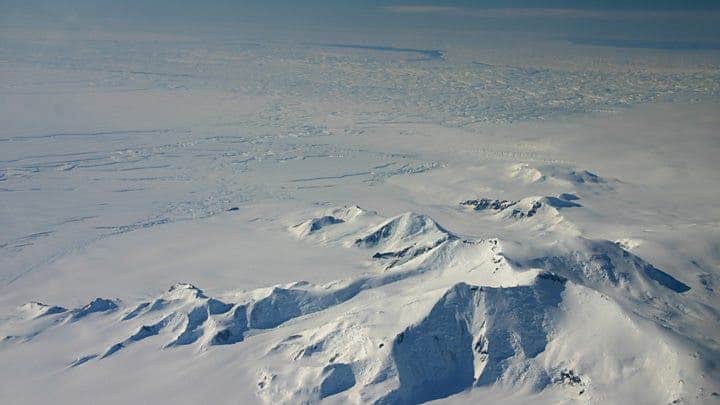Known as the “doomsday glacier”, the Thwaites Glacier in Antarctica is 74.000 square miles across and has been described as vulnerable to global warming.
A group of scientists decided to take a closer look and try to find out whether the glacier will soon collapse.

To say that Thwaits is suffering is an understatement. The amount of ice that has flown out of Thwaites as well as from other glaciers of the area has almost doubled over the past 30 years.
The ice that drains from Thwaites into the Amundsen Sea accounts for 4% of the global sea-level rise. If it collapses completely, it would increase sea levels around 65cm (25 inches).
That’s why scientists are now trying to find out how fast that could happen. Five teams of researchers from the US and UK have been working in Thwaites for the past two months. They have drilled the glacier for the first time between 300 and 700 meters through the ice to the ocean, extracting cores to find out more information about the glacier’s history and future evolution.
“We know that warmer ocean waters are eroding many of West Antarctica’s glaciers, but we’re particularly concerned about Thwaites. This new data will provide a new perspective of the processes taking place so we can predict future change with more certainty,” said Keith Nicholls, an oceanographer from the UK.
The teams used a set of instruments at the grounding zone, feeding them through the borehole. This included a small under-ice robot called Icefin that collected data on the interaction of the glacier with the ocean and the underlying sediments.
Icefin swam two kilometers in January from the drill site to the Thwaites grounding zone and measured, took images and mapped the melting and the dynamics of the glacier. Meanwhile, another team extracted sediments through a metal tube that made holes in the ice.
“We designed Icefin to be able to access the grounding zones of glaciers, places where observations have been nearly impossible, but where rapid change is taking place. To have the chance to do this at Thwaites Glacier, which is such a critical hinge point in West Antarctica, is a dream come true,” said Britney Schmidt, lead scientist for Icefin.
More than 100 scientists and support staff are taking part in the field season on the Thwaites Glacier, located 1600 kilometers away from the UK and the UK stations. The main goal is to improve predictions on the global sea-level rise from Thwaites through a better understanding of the dynamics of the ice sheet.
The research teams started their work in Antarctica in November 2019 and will be there until March. Most of the researchers travel through the US station, then going to the camps located near the Antarctic coast. Teams are located at an already existing camp on the ice called West Antarctic Ice Sheet Divide.
UK science minister Chris Skidmore said: “This is an exciting achievement by our researchers. We are leading the fight against climate change and UK researchers are at the forefront of investigating the impact of rising temperatures in Antarctica. The government is making significant investments toward their vital work.”


